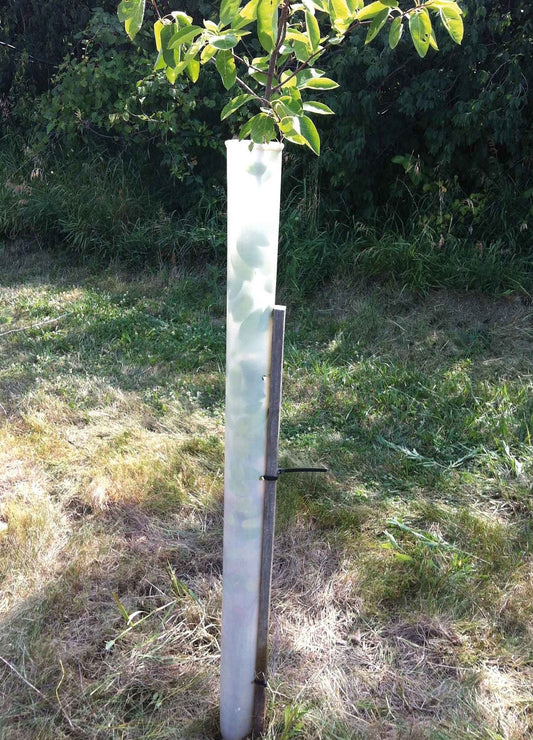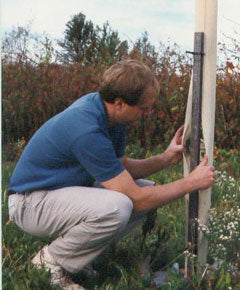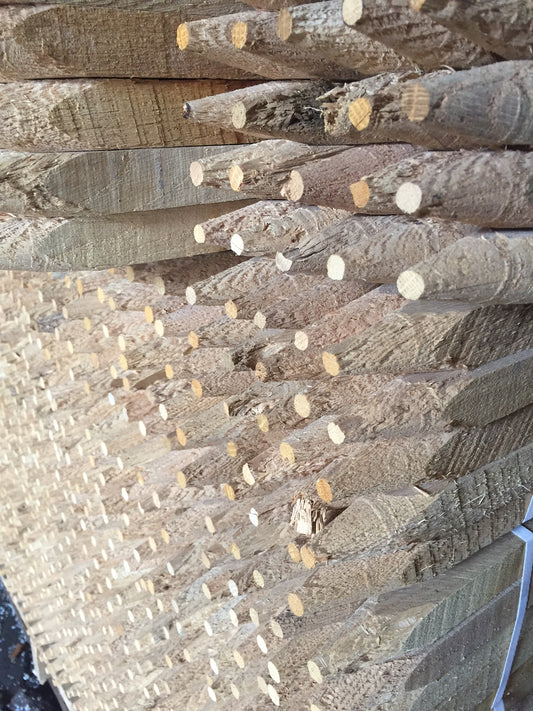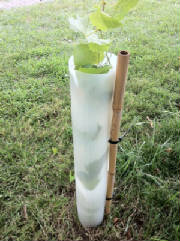Frequently Asked Questions
Even though tree protection tools and techniques have been around since the mid-eighties, it is still an emerging technology, leading to many questions about their use and effectiveness.
WHY SHOULD I SPEND TWO DOLLARS OR MORE TO PROTECT A ONE DOLLAR TREE?
If you include all your costs, including planting time, replanting time in case the tree doesn't make it, and lost opportunity costs because of slower growing, less healthy trees, you'll find that the tree costs a lot more than you think.
DEER KEEP EATING THE TOPS OF MY TREES. WHAT SIZE TREE PROTECTORS DO I NEED?
At least four-foot tall. If the deer are especially aggressive in your area, you might consider five-footers.
WHAT CAN I DO TO PREVENT MY TREES FROM SUFFERING DIEBACK EACH WINTER? WHAT TREE SPECIES ARE MOST SUSCEPTIBLE TO COLD WEATHER DIEBACK?
Tree protectors slow down the dormancy process so much that many trees suffer dieback when temperatures drop. If the temperature drop is significant, the trees can even die. The trees most susceptible are black walnut, chestnut, and oak. The best solution is to use protectors that don't absorb an excessive amount of radiant energy and to seasonally or permanently vent the protector.
IS MY CLIMATE TOO WET? ...TOO HOT? ...TOO DRY?
One key advantage of using tree protectors is their ability to retain moisture, which can significantly reduce the effects of a drought. However, this advantage can be a disadvantage in wet climates if the tubes are not properly vented. We strongly recommend permanently vented protectors in such areas.
SOME MANUFACTURERS TELL ME THAT THE DIAMETER OF THE TUBE DOESN'T MATTER. THEIRS IS ABOUT A HALF INCH SMALLER THAN YOURS. IT'S DIFFICULT TO BELIEVE THAT'S SIGNIFICANT ENOUGH TO MAKE A DIFFERENCE.
Look at it this way: A half inch increase in diameter from, say, 3 1/2 inches to 4 inches is an increase of over 30 percent in the volume of a four-foot shelter. That is significantly more space and many trees need significantly more space.
But for some trees even that amount of increase is not enough. That's why we provide larger standard sizes and offer a DoubleWide unit.
Tree Pro's DoubleWide protectors are 8" in diameter and can be used on all trees that have a spreading growth habit. This includes virtually all fruit trees, most evergreens, chestnuts, etc.
There's no longer any reason to squeeze your trees into smaller tubes.
I CAN SEE WHY I NEED SHELTERS FOR MY TREES, BUT I'M NOT CONVINCED I NEED ALL THE OTHER STUFF.
All the other stuff (Root Dip, Root Reviver, Nutri Pak, Weed Mat, etc.) is designed to help trees survive and thrive. We offer these products for the same reason we offer shelters: They improve tree health, survival and growth.
ISN'T IT A FACT THAT MICE AND VOLES GET INSIDE THE TUBES, ESPECIALLY IN WINTER, AND THAT THEY OFTEN KILL THE TREE?
This is a bigger problem with our competitors' products than is with ours. Tubes that aren't vented, especially those that are pressed down into the ground, provide a cozy, comfortable place for critters to nest.
Our protectors and shelters can be vented or opened, which increases air circulation. During the winter, mice and voles really don't find vented protectors offer much protection from the weather. In addition, we don't recommend pressing the shelter into the ground. It should be snug to the ground but not stuck in the ground.
IS IT REALLY POSSIBLE TO GET TWO USES OUT OF TREE PROS?
It depends. When the trees reach the point where they can thrive on their own, you can remove the Tree Pro shelter and put it around a newly planted seedling. If this can be achieved in four years or less, you should be able to use the protector again.
HOW SOON AFTER I PLANT MY TREES DO I NEED TO INSTALL THE PROTECTOR?
ASAP!!! Deer and rodents will not wait for you to install your protectors.
I'VE SEEN SOME PROTECTORS MADE OF CLEAR PLASTIC. WHY WOULDN'T THEY BE BETTER THAN YOURS?
The answer can be fairly involved. To see more on this subject look under "Independent Studies" at this site.
Basically, to be effective, the color and density (translucence) of the protector should mimic nature. The color and density of our protectors are selected to mimic the amount and color of light filtering through a forest canopy necessary for optimal seedling growth.
A protector that allows all the light to pass through is inferior to one that balances the color and quantity of light to coincide with what Nature provides.
A protector that allows too little light to pass through is likewise inferior.
WHAT DO YOU THINK ABOUT TYING TWO OR THREE TREE PROS TOGETHER TO PROTECT EVERGREENS?
You're not the first one to realize that Tree Pros can be connected together to form a larger diameter protector. Tree Pros have even been used this way to protect strawberry and tomato plants. However, you may be able to achieve the same result by using Tree Pro Double Wides.
Tree Pro Tree Survival Products
-
Miracle Tube Tree Grow Tube
Regular price From $6.50Regular priceUnit price / per -
Tree Pro Tree Protector
Regular price From $6.50Regular priceUnit price / per -
Tree Support Stake
Regular price From $11.00Regular priceUnit price / per -
Vine Pro Vineyard Grow Tube
Regular price From $8.25Regular priceUnit price / per




